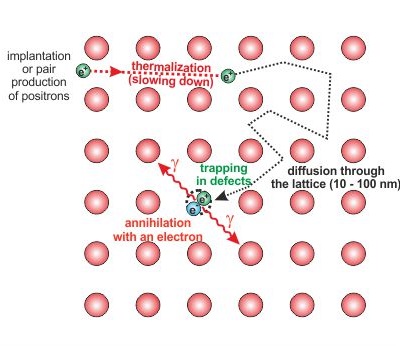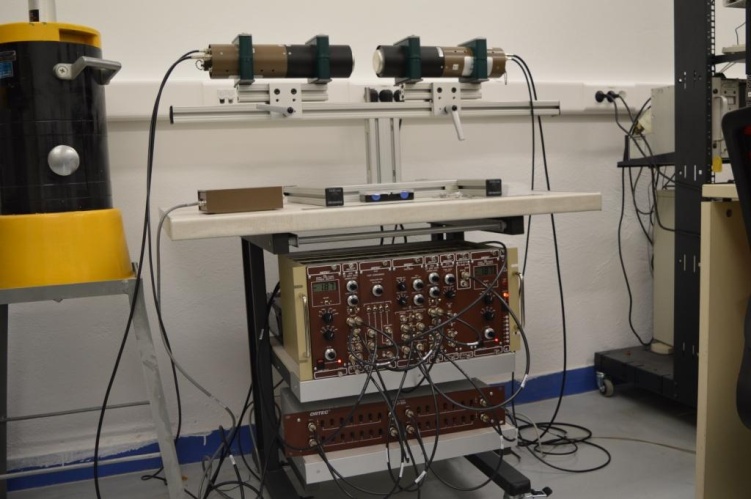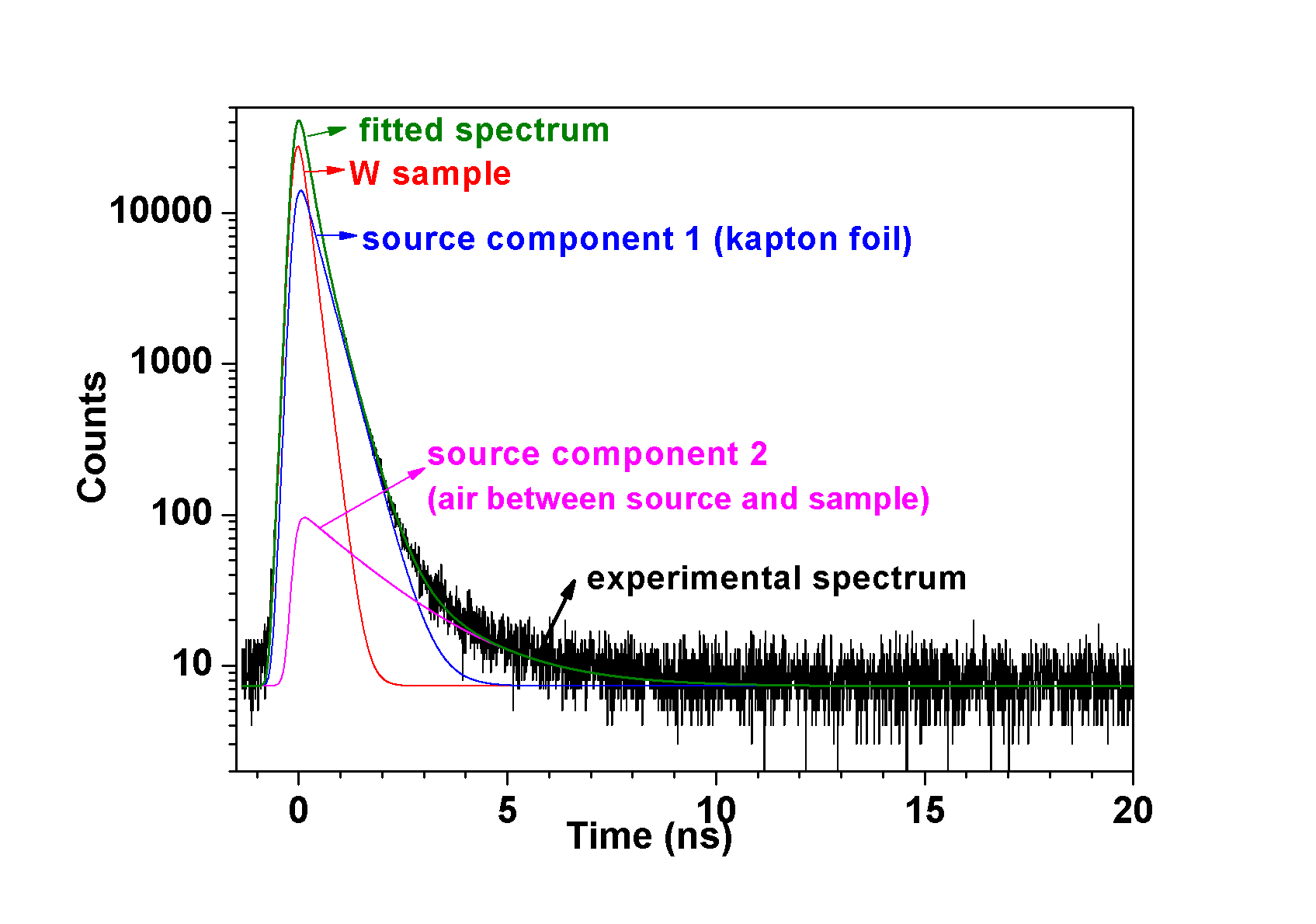PALS is used to investigate open volume defects in materials. Positrons created from a radioactive source (22Na) are incident on a material. The positrons thermalize, i.e. lose kinetic energy, through scattering events. Defects, such as vacancies, voids and dislocations, act as traps for the thermalized positrons due to the absence of positively charged nuclei at these sites (Fig.1). As a result of the reduced electron density at these sites, the positron annihilation lifetime is increased for these trapped positrons, and can be related to the size/type of defect.


The positron lifetime of a single event can be measured by detecting the time difference between the birth γ-quantum of the β+-decay in the 22Na source and one of the annihilation γ-quanta of an energy of 511 keV. A special “sandwich” arrangement of foil source, samples, and detectors guarantees that all positrons emitted from the source are penetrating the sample material. The γ-rays are converted by scintillator–photomultiplier detectors into analog electrical pulses. The pulses are processed by discriminators. Their output pulses start and stop a time-to-amplitude converter as an “electronic stopwatch”. The amplitude of the output pulse is proportional to the time difference between the birth and the annihilation γ-quanta and, thus, represents a measure of the positron lifetime. The single annihilation event is stored after analog–digital conversion in the memory of a multi-channel analyzer. The channel numbers represent the time scale. In order to obtain the complete lifetime spectrum, more than 106 annihilation events must be recorded. The apparatus used is depicted in Fig.2.


